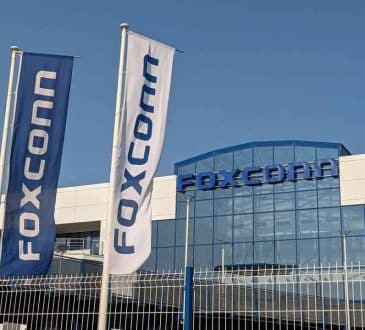The Corporate Vitality Index

Today’s leading businesses are facing many near-term challenges in an uncertain economic and political environment. More than ever, though, they also need to focus on the long term, because the keys to success in the next decade will be different from today’s. Business leaders need to reinvent their companies for the future while ensuring strong performance in the present.
In other words, businesses need to maintain vitality — the capacity to reinvent the business and grow sustainably.
To sustainably thrive, businesses need to build capacities for continual innovation and reinvention. This is especially difficult for large, established companies : complexity and inertia build as businesses age and grow, inhibiting the ability to drive change and renew advantage. Compounding the challenge, the most commonly used metrics for business (such as growth, market share, and profitability) measure only what has happened — which is no longer a strong indicator of what will happen.
To look forward, leaders need to measure, and manage, vitality.
HOW CORPORATE VITALITY IS MEASURED ?
The index is based on two pillars.
The first is Future Market Potential : the expectation of future growth from financial markets, defined as the present value of growth options (PVGO). This represents the share of a company’s market capitalization that is not attributable to the earnings power of existing assets and business models. This pillar accounts for 30% of the index.
The second pillar is Company Capacity : the assessment of the company’s ability to deliver on this potential. It comprises 19 factors, drawn from a larger group of variables and calibrated against historical data for their ability to predict long-term revenue growth, and accounts for 70% of the index.
These factors are grouped into four areas :
> Strategy. Characterization of a company’s strategic orientation on three dimensions : long-term orientation, focus on a broader purpose beyond financial performance, and “biological thinking.”
> Technology and Investment. Assessment of the company’s capital expenditures and R&D spending (as a percentage of sales, compared with sector averages); the growth of a company’s patent portfolio (from a global database of patent filings) and that portfolio’s digital intensity (the share of patents in computing and electronic communication areas); and the quality of the company’s startup investment and acquisition portfolio (based on comparison with the best-performing global venture capital funds).
> People. Measurement of the gender diversity of the company’s management and larger workforce; the age of its executives and directors; its leadership stability (represented by the frequency of executive and director turnover); the geographic diversity of its directors; and the size of its board.
> Structure. Analysis of the age since company founding; size of the company (based on revenue); and growth track record (over prior three years and six months).
HOW TO INCREASE VITALITY ?
→ Think differently about strategy. It can be natural for leaders to focus on the day-to-day issues of running their business, but to maintain vitality, they need to counterbalance this tendency with a long-term, exploratory perspective. They must also recognize that traditional approaches to strategy and execution, based on deliberate planning and top-down direction, are often insufficient in today’s business environment. Leaders instead need to master new strategic capabilities, such as adapting to shifts in the market, shaping the environment in which they operate, and renewing strategy when old models have been exhausted.
→ Build the right capabilities. To deliver on their growth potential, businesses need to build a range of dynamic capabilities. These include technological excellence (even for companies that are not in traditional digital sectors), a diverse workforce with a culture that encourages the collision of ideas, and the organizational capacity to self-disrupt before being disrupted from the outside.
→ Organize for ambidexterity. Vitality alone is not enough for incumbents to thrive sustainably; strong performance in the core business is also necessary in order to finance growth. However, running the business and reinventing it require different skills that are hard to balance — many companies fall into either the “success trap” (over-exploit-ing the current business, at the expense of tomorrow’s) or the “perpetual search trap” (over-exploring, at the expense of profitable commercialization).
Leaders can find an equilibrium by structuring their organizations for ambidexterity.
This can be done in four ways, depending on the diversity and dynamism of a company’s environment:
separating segments of the business according to their situations, so that each can adopt a different approach to strategy; switching strategic approaches over time; self-organizing so that business units can choose a variety of approaches; and tapping into ecosystems to benefit from partners that specialize in each approach.
→ Use forward-looking metrics. Past performance is no longer as likely to persist, yet businesses today tend to be managed with only backward-looking metrics. Leaders need to complement those with forward-looking measures to understand their company’s fitness for the future.
This article is an excerpt of “Achieving Vitality in Turbulent Times”, written by Martin Reeves, Gerry Hansell, Kevin Whitaker, Tom Deegan and Hen Lotan, for the BCG Henderson Institute.
Have you read?
Written by Policy Factory™
For those who are planning their next business trip, here are the best hotels for business travelers to stay in Jerusalem. Cairo. Doha. Guadeloupe. Sharm El Sheikh. Eilat. Hurghada. Amman. and Dubai.
Add CEOWORLD magazine to your Google News feed.
Follow CEOWORLD magazine headlines on: Google News, LinkedIn, Twitter, and Facebook.
This report/news/ranking/statistics has been prepared only for general guidance on matters of interest and does not constitute professional advice. You should not act upon the information contained in this publication without obtaining specific professional advice. No representation or warranty (express or implied) is given as to the accuracy or completeness of the information contained in this publication, and, to the extent permitted by law, CEOWORLD magazine does not accept or assume any liability, responsibility or duty of care for any consequences of you or anyone else acting, or refraining to act, in reliance on the information contained in this publication or for any decision based on it.
Copyright 2024 The CEOWORLD magazine. All rights reserved. This material (and any extract from it) must not be copied, redistributed or placed on any website, without CEOWORLD magazine' prior written consent. For media queries, please contact: info@ceoworld.biz
SUBSCRIBE NEWSLETTER








